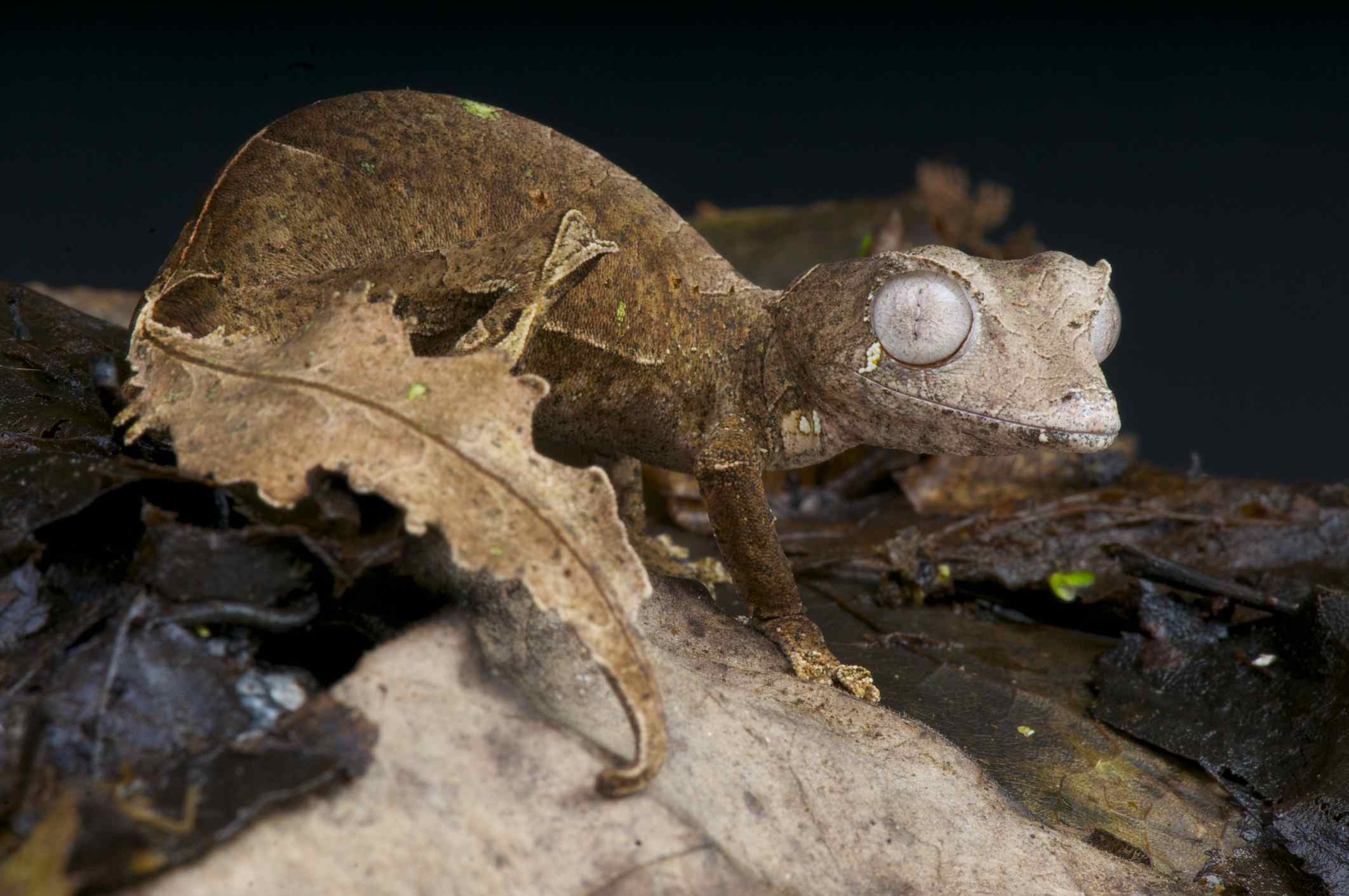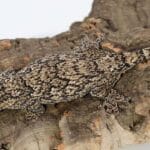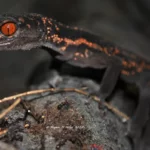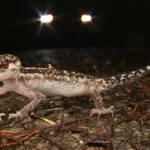Journey into the mystical rainforests of Madagascar and encounter a creature of myth and camouflage: the satanic leaf-tailed gecko (*Uroplatus phantasticus*). This comprehensive guide delves into the fascinating world of this cryptic reptile, exploring its remarkable adaptations, behavior, conservation status, and the complexities of captive care.
Unveiling the Phantom of the Forest
The satanic leaf-tailed gecko. A name that evokes images of darkness and mystery, yet this small reptile is far more fascinating than fearsome. Its name, perhaps inspired by the horn-like projections above its eyes and reddish hues, belies a shy and elusive creature. This master of disguise, perfectly adapted to its rainforest home, deserves our admiration and protection.
A Symphony of Camouflage: Appearance and Habitat
Imagine a gecko so perfectly camouflaged it resembles a dried leaf clinging to a branch. That’s the Uroplatus phantasticus. Found exclusively in the rainforests of Madagascar, this remarkable gecko has evolved a suite of adaptations to blend seamlessly into its surroundings. Its flattened body, textured skin, and, of course, its namesake leaf-shaped tail render it virtually invisible against the bark and foliage. Skin flaps along its body, head, and even above its eyes, further disrupt its outline, enhancing its camouflage. Coloration varies, ranging from browns and tans to reddish and yellowish hues, each perfectly mimicking the dead leaves it lives amongst.
These geckos are primarily nocturnal, emerging under the cover of darkness. During the day, they remain motionless, clinging to branches or tree trunks, virtually indistinguishable from their surroundings. This camouflage not only protects them from predators like snakes and birds but also allows them to ambush unsuspecting prey.
Hunter of the Night: Diet and Behavior
As darkness descends, the satanic leaf-tailed gecko transforms into a stealthy predator. Its large, forward-facing eyes, adapted for low-light conditions, help it locate prey. Its diet consists primarily of insects: crickets, moths, cockroaches, and other invertebrates are all on the menu. It is an ambush predator, patiently waiting for an unsuspecting insect to wander within striking distance before seizing it with a lightning-fast strike.
Although they can be territorial, especially during breeding season, these geckos are generally solitary creatures. They communicate primarily through body language, using postures and tail movements. A raised tail, for example, might indicate aggression or a defensive display.
Captive Care: Navigating the Challenges
Keeping a satanic leaf-tailed gecko in captivity is a challenging but rewarding endeavor, requiring specialized knowledge and not recommended for beginners. Careful attention to their specific needs is crucial for their well-being.
Creating a Rainforest Haven
A tall, well-ventilated enclosure is essential, providing ample vertical space for climbing and replicating their natural arboreal environment. High humidity levels, mimicking the humid rainforests of Madagascar, are crucial and can be maintained through regular misting and a moisture-retaining substrate like coconut fiber or sphagnum moss. Live plants not only help regulate humidity but also offer hiding places and enhance the gecko’s sense of security.
Temperature and Lighting: A Balancing Act
Maintaining the correct temperature gradient is vital. A basking spot of around 80°F (27°C) should be provided, with the rest of the enclosure cooler, around 70-75°F (21-24°C). Heat rocks should be avoided, as they can cause burns. While UVB lighting is not essential, some experts believe it can contribute to the gecko’s overall health.
Nourishing the Nocturnal Hunter
A diet of live, appropriately sized insects is essential. Crickets, roaches, and other feeder insects should be dusted with calcium and vitamin D3 supplements before feeding to ensure proper nutrition. Fresh water should always be available in a shallow dish.
Weighing the Pros and Cons
| Pros | Cons |
|---|---|
| Fascinating and unique pets | Demanding care requirements |
| Relatively low maintenance (once established) | Not suitable for beginners |
| Can be bred in captivity | Susceptible to stress and illness |
| Contribute to conservation awareness | Wild-caught individuals are problematic |
Conservation: Guardians of the Forest
While not currently classified as endangered, the satanic leaf-tailed gecko faces growing threats. Habitat loss due to deforestation and logging is the most significant concern. The illegal pet trade also exerts pressure on wild populations. Discover the profound scarab beetle meaning and its intriguing symbolism in ancient cultures. Also, explore the captivating world of scarus coeruleus, an alluring species of marine fish with vibrant hues.
Ongoing research is vital for understanding the current status and distribution of these enigmatic creatures. Studies on population dynamics, habitat use, and the impact of human activities are necessary for developing effective conservation strategies. Supporting organizations dedicated to protecting Madagascar’s rainforests is a crucial step in ensuring the survival of the satanic leaf-tailed gecko for generations to come.
The Gecko’s Fate: A Shared Responsibility
The future of the satanic leaf-tailed gecko remains uncertain. By raising awareness about the threats it faces and promoting responsible pet ownership, we can play a role in its continued survival. There is still much to learn about this elusive creature, and ongoing research will undoubtedly reveal even more about its fascinating life. It is our responsibility to ensure that this master of disguise continues to thrive in the wild, captivating us with its remarkable adaptations and reminding us of the incredible biodiversity our planet holds.
Debunking the Bite: Are Satanic Leaf-Tailed Geckos Dangerous?
The satanic leaf-tailed gecko’s name might conjure images of a biting beast, but the reality is far different. These geckos are not aggressive towards humans. Their primary defense is their incredible camouflage – they’d much rather disappear than bite. While they do possess teeth, they are tiny and their jaws are weak, designed for capturing insects, not inflicting harm on larger creatures. A bite from a satanic leaf-tailed gecko would be more like a gentle tickle than a painful nip. Ongoing research continues to explore the behavioral nuances of this species, but all evidence suggests biting is an exceptionally rare occurrence, primarily a last resort under extreme stress.
A Vulnerable Future: Is the Leaf-Tailed Gecko Extinct?
The leaf-tailed gecko is not extinct, but its future is precarious. While the satanic leaf-tailed gecko is currently listed as “Least Concern” by the IUCN, this is not a cause for complacency. Deforestation and habitat loss continue to threaten their survival, shrinking their rainforest home and fragmenting populations. The illegal pet trade also poses a significant risk. Ongoing research and conservation efforts are essential to safeguarding these unique creatures and the fragile ecosystems they inhabit.
Decoding the Gecko’s Demeanor: Personality of the Satanic Leaf-Tailed Gecko
The satanic leaf-tailed gecko is a shy and retiring creature. Its docile nature and reliance on camouflage suggest a personality geared towards avoidance rather than confrontation. These geckos are easily stressed and prefer the safety of their hidden perches. While they might bite under extreme duress, it’s a rare occurrence. Further research into their behavior could reveal even more about their fascinating lives, but for now, we can appreciate their elusive nature and the vital role they play in the Madagascan rainforest.
- Mastering Leader in Spanish: The Complete Guide - April 19, 2025
- Uncovering Surprising Parallels: England Size Compared to US States - April 19, 2025
- Old Mexico Map: Border Shifts 1821-1857 - April 19, 2025
















